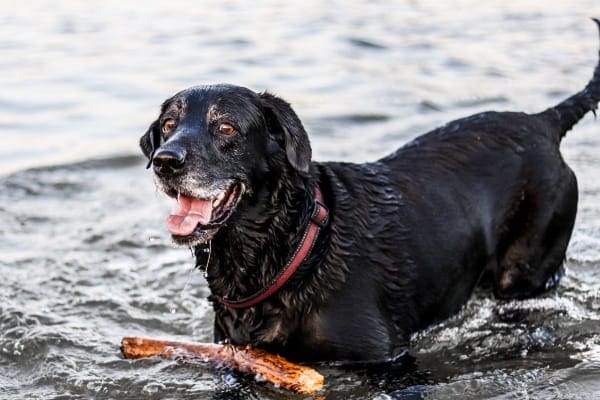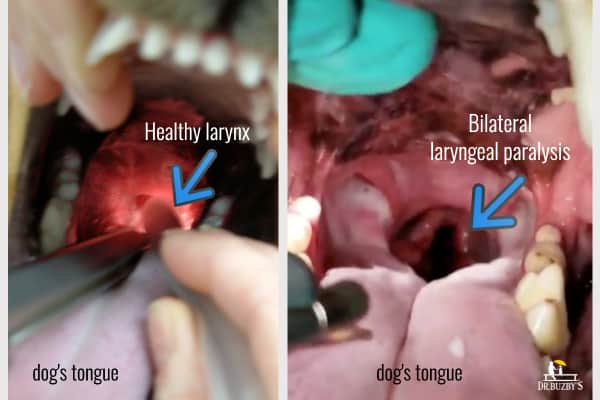Do certain breeds more commonly develop laryngeal paralysis?
The most commonly affected breed for acquired laryngeal paralysis is the Labrador Retriever. The congenital form is seen in Bouvier des Flandres, Siberian Huskies, Bull Terriers, and Dalmatians, and clinical signs usually occur at an early age in these breeds.
The ultimate guide to laryngeal paralysis in dogs Table Of Contents
When I think of laryngeal paralysis in dogs (commonly known as lar par), I think of Charlie—a good-natured black Labrador Retriever who had been my patient for many years.

I think about a complex syndrome in senior dogs called Geriatric Onset Laryngeal Paralysis Polyneuropathy or “GOLPP.” While it had not been fully characterized nor named when Charlie was alive, in retrospect, I’m sure GOLPP most accurately described his condition.
I still think about the night we lost Charlie because of this disease, and the three boxes of tissues his owner and I went through.
The senior Labrador Retriever’s mom, Francis, was the quintessential veterinary client—observant and conscientious. When she noticed changes in Charlie’s breathing, she quickly scheduled an appointment for a veterinary exam.
Francis was almost apologetic in the exam room because the symptoms she described were somewhat vague. She said that sometimes Charlie’s breathing sounded like he was roaring. But as she described this, he lay sleeping on the cold tile floor, looking like the picture of health.
She also explained that Charlie’s voice had changed when he barked. She finished that sentence looking sheepish, as if I might write off her concerns to some manner of delayed doggie puberty.
However, it’s important to point out two things:
When Francis described her concerns, I believed her. It wasn’t her job to ascribe significance to what she observed and make a diagnosis. That was my job. Her job was to recognize changes as early as possible and alert me to them. And, she was a superstar at that.
How is laryngeal paralysis in dogs diagnosed?
If you suspect that your dog may have laryngeal paralysis, a visit to your veterinarian is in order. Diagnosis of laryngeal paralysis in dogs is based on a combination of signalment (age and breed), as well as clinical signs, such as the characteristic stridor. To confirm the diagnosis, an upper airway examination is performed. (This is what we did with Charlie.)
It is very difficult, if not impossible, to look into the back of an awake dog’s throat to see the structures in question. That’s why dogs are sedated, usually with an anesthetic drug called Propofol. (Probably the same short-acting anesthetic you had if you’ve had a colonoscopy.)

After Charlie was sufficiently sedated to allow me to override his gag reflex and get a good look at his larynx, I injected a drug called doxapram into his IV catheter. This stimulated him to take several breaths. During this short window of time, a lighted laryngoscope was held in the mouth so I could observe his cartilages.
I diagnosed Charlie with bilateral laryngeal paralysis because neither of his cartilages moved.